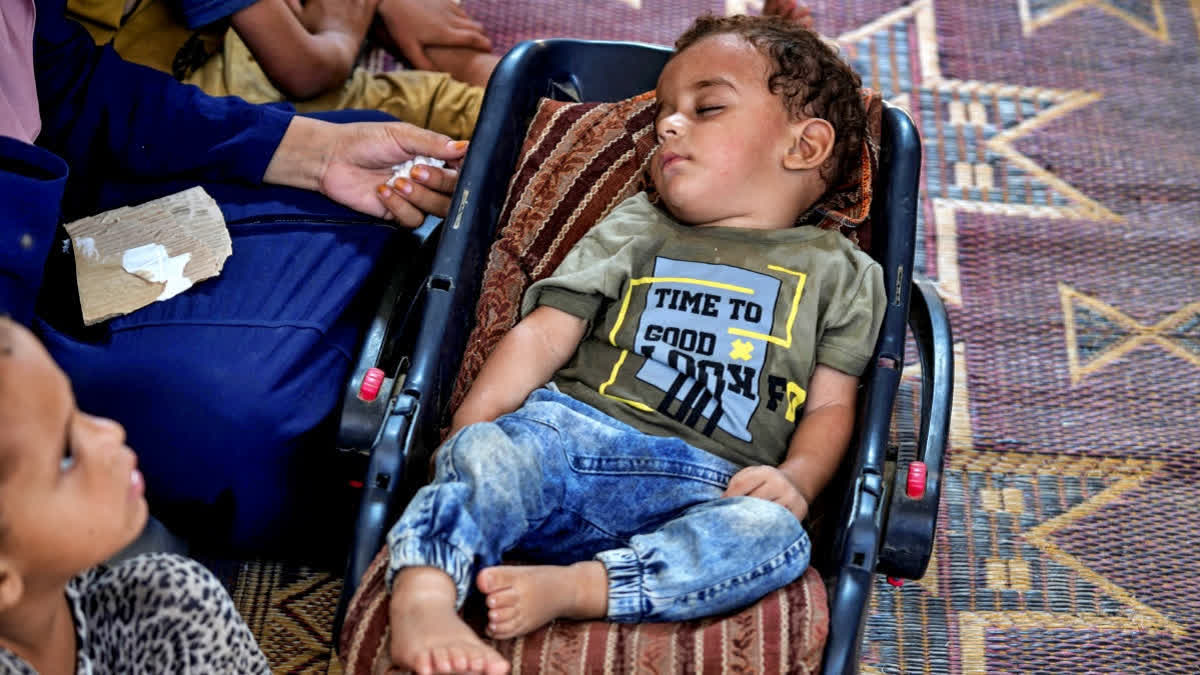London: Polio was eliminated from most parts of the world as part of a decadeslong effort by the World Health Organisation and partners to wipe out the disease. But polio is one of the world's most infectious diseases and is still spreading in a small number of countries. The WHO and its partners want to eradicate polio in the next few years.
Until it is gone from the planet, the virus will continue to trigger outbreaks anywhere children are not fully vaccinated. The recent polio infection in an unvaccinated baby in Gaza is the first time the disease has been reported in the territory in more than 25 years.
What is polio?
Polio is an infection caused by a virus that mostly affects children under 5. Most people infected with polio don't have any symptoms, but it can cause fever, headaches, vomiting and stiffness of the spine. In severe cases, polio can invade the nervous system and cause paralysis within hours, according to the WHO.
The UN agency estimates that 1 in 200 polio cases results in permanent paralysis, usually of the legs. Among children who are paralysed, up to 10% die when their breathing muscles are paralysed.
The virus spreads from person to person, entering the body through the mouth. It is most often spread by contact with waste from an infected person or, less frequently, through contaminated water or food.
Just how bad was polio in the past?
Very bad. Polio has existed for centuries; ancient Egyptian hieroglyphics show children walking with canes, with the wasted limbs characteristic of polio victims.
Before the first vaccine was developed in the 1950s, polio was among the most feared diseases. An explosive 1916 outbreak in New York killed more than 2,000 people and the worst recorded US outbreak in 1952 killed more than 3,000. Many people who survived polio suffered lifelong consequences, including paralysis and deformed limbs. Some people whose breathing muscles were paralysed required iron lung chambers to help them breathe.
When did the eradication campaign begin?
WHO passed a resolution to eradicate polio in 1988, spurred on by the success of eliminating smallpox eight years earlier. Their original target was to wipe out polio by 2000. The WHO along with partners including the US Centres for Disease Control and Prevention, UNICEF and Rotary International boosted the production of an oral vaccine and rolled out widespread immunisation campaigns. Polio cases dropped by more than 99%.
Afghanistan and Pakistan are the only countries where the spread of polio has never been stopped. There are also outbreaks in more than a dozen other countries, mostly in Africa. WHO and partners now aim to wipe out polio by 2026.
Why has it taken so long?
It's extraordinarily difficult. Stopping polio outbreaks means vaccinating at least 95% of the population everywhere, including in conflict-ridden countries and poor regions with broken health systems and other priorities.
The oral vaccine is cheap, easy to use and is better at preventing entire populations from becoming infected. But it contains weakened, live polio virus and in very rare cases can spread and cause polio in unvaccinated people. In even rarer instances, the live virus from the vaccine can mutate into a new form capable of starting new outbreaks.
Health authorities have become more successful in reducing the number of cases caused by the wild polio virus. Vaccine-related cases now cause the majority of infections worldwide.
The problem with trying to eradicate polio is that the need for perfection is so great and there are so many weak links, said Scott Barrett, a Columbia University professor who has studied polio eradication. The technical feasibility is there, but we live in a vastly imperfect world.
Read More



